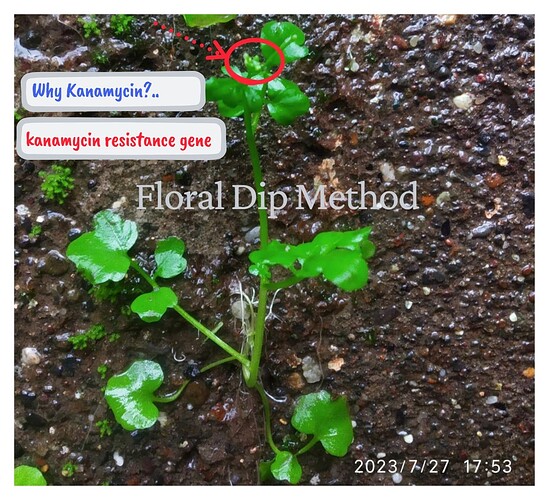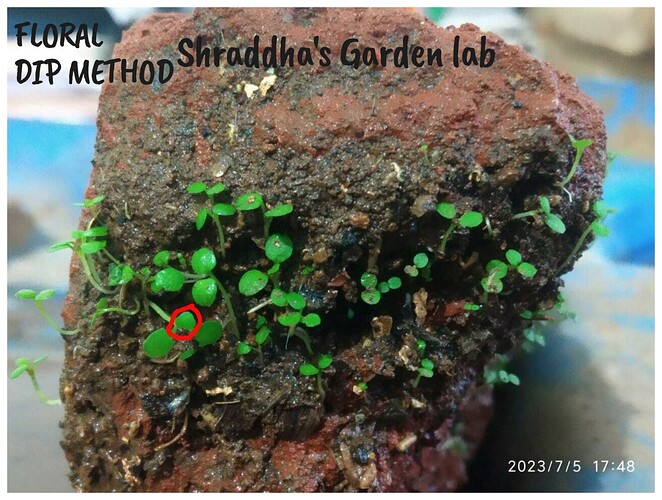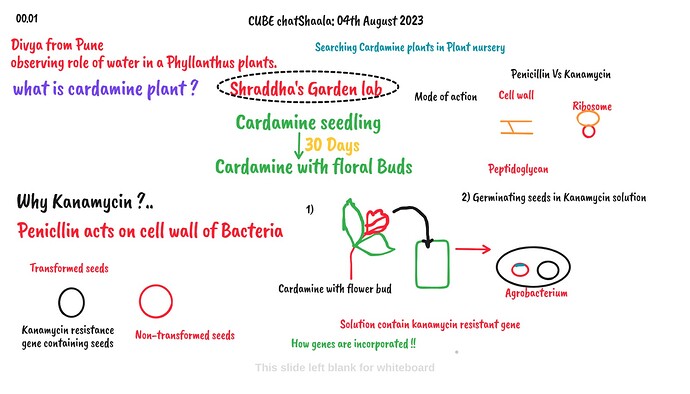Floral dip method in Cardamine
Cubists like Shalini ma’am ,Rechel & Nazish were performed floral dip method by using Cardamine plants .
Currently Shraddha is having plenty of Cardamine plants in her Garden lab .
Can we Perform Floral dip method in Cardamine plants !?
Making kanamycin resistant Cardamine plants by Floral dip method
1)Floral bud of Cardamine dip in solution contain kanamycin resistant gene .
Agrobacterium contain kanamycin resistant gene may incorporated to plant genome
Selection of transformed seeds
2)Germinating seeds in Kanamycin solution
Those seeds which will germinate in Kanamycin solution will consider as transformed seeds and rests are non-transformed seeds.


